11 Most Endangered Historic Sites in Nevada
From our friends at Preserve Nevada comes this year's 11 Most Endangered Sites in Nevada:
PRESERVE NEVADA ANNOUNCES NEVADA'S 2008
ELEVEN MOST ENDANGERED HISTORIC PLACES
Preserve Nevada, a statewide nonprofit organization dedicated to the preservation of Nevada's cultural, historical, and archeological heritage, announced their 2008 choices for Nevadas Eleven Most Endangered Historic Places today. The announcement will took place at the Nevada Historical Society's Biennial Conference on Nevada Hisotry.
Preserve Nevada selected Nevada's Eleven Most Endangered Historic Places as a part of its program to bring attention to historically significant buildings, sites, and landscapes under threat of destruction.
"Nevada is in danger of losing many of its cultural and architectural treasures to the states unprecedented development," said former Sen. Richard H. Bryan, chairman of the Preserve Nevada board. "I hope that as we build awareness of the importance of these historic places, they will serve as testaments to our preservation successes in the future."
Additionally, Preserve Nevada has created updates on several past Eleven Most Endangered sites in order to bring attention to their current situations. Finally, Preserve Nevada has indicated several success stories regarding historic preservation in the state.
Preserve Nevada is a non-profit preservation organization associated with the National Trust for Historic Preservation, the Nevada Department of Cultural Affairs, and the Public History program at the University of Nevada, Las Vegas College of Liberal Arts.
The 2008 Eleven Most Endangered Historic Places in Nevada
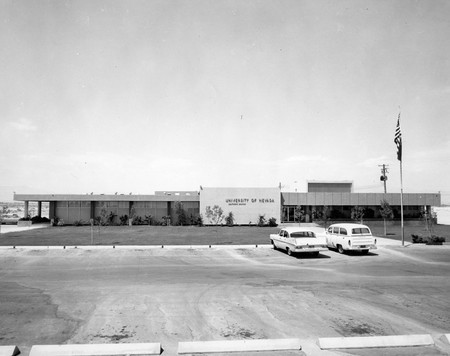
Maude Frazier Hall, Las Vegas
Built by Zick & Sharp Architects, Maude Frazier Hall held the first classes at UNLV. The building is named after Maude Frazier, who persuaded the State of Nevada to provide funds for a fledgling university system in southern Nevada. Despite an insensitive later addition, the building is an excellent example of the Mid-century Modern Style with its long profile ribbon windows, and asymmetric façade. UNLV is currently developing a fifty-year plan for the university, with Maude Frazier Hall slated for potential demolition in the coming year.
The Paradise School, Las Vegas
Constructed in 1949, the Paradise School and associated buildings are located in the Paradise Township of Clark County, and is owned by Clark County. The school is Modern Ranch Style and may be attributed to Richard Stadelman, AIA and Associates. Stadelman designed many local elementary schools between 1949 and 1956, and a Moderne room tower addition to the Flamingo Hotel in 1947. The Paradise School remains one of the oldest intact elementary schools in Clark County. Currently, the proposed placement of the elevated monorail and track structure alongside the gym has the potential to threaten its National Register for Historic Places integrity.
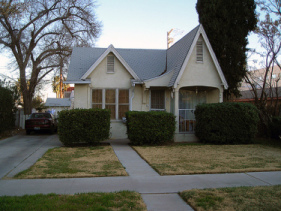
The Las Vegas Historic District, Las Vegas
Listed on the National Register in 1991, the Las Vegas High School Neighborhood Historic District began development during the late 1920s. The neighborhood includes examples of several different Revival and Traditional styles of architecture. Since much of the original housing has been demolished or converted into professional offices, the historical integrity of the neighborhood has suffered significantly. Many times, the new development is too large for the neighborhood or does not reflect existing historic styles. Recent attempts to adopt recommended (non-regulatory) design guidelines for new development and alterations failed.
Building 100, Date Street Complex, Boulder City
Built in 1941, Building 100 served as the administrative offices of the Bureau of Mines Metallurgy Research Laboratory. The building is located within the Bureau of Reclamations (BOR) Date Street Complex, and is listed as a contributing resource within the Boulder City National Register Historic District. Currently owned by the BOR, the building has been gutted and roof removed, with the agency citing hazardous materials and other issues. The BOR has decided to demolish the building. However, as of press time, the demolition has been temporarily delayed until the Section 106 Review process is completed and its future is uncertain.
Rhyolite, Nevada
Rhyolite was a typical, ephemeral Nevada mining town, platted in 1905 and essentially deserted by 1912. The town is historically significant because many of its buildings were constructed of stone and concrete, which was not a common practice at the time. Additionally, the town represents historic mining in Nevada. Most of the existing historic structures are deteriorating and in need of stabilization and/or rehabilitation. Additionally, the town is threatened by vandalism as well as increased tourism. Rhyolite is in need of financial support from the Bureau of Land Management as well as a full-time, one-site caretaker to protect the town.
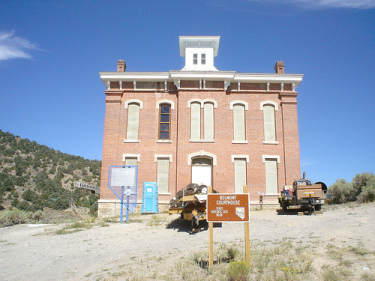
The Nye County Courthouse, Tonopah
Built in 1905 at the cost of $55,000, the Nye County Courthouse was the seat of Nye County government until approximately ten years ago. The land had been donated to the county by Jim Butler, who is recognized for discovering the silver deposit that led to the formation of the town of Tonopah. When a new courthouse was built, the historic courthouse was virtually abandoned, except for housing a few non-profit organizations and a state agency field office. After it quickly feel into despair, Nye County Commissioners pledged nearly $200,000 to stabilize and replace the roof to arrest the decay. Currently, the building is an excellent candidate for restoration and rehabilitation projects.
Nevada Northern Locomotives 93, 40, and 81, Ely
For almost a century, locomotives 93, 40, and 81 hauled ore and passenger trains for the Nevada Northern Railway. Yet, mechanical difficulties have currently sidelined all three locomotives. Without the original companies and individuals who manufactured and maintained these locomotives, the challenge is fabricating new parts from steel, brass and iron to put these machines back in service.
Stokes Castle, Austin
Stokes Castle is one of the state's most recognizable historic landmarks. The three-story granite tower was built in 1897 for Anson Phelps Stokes, the driving force behind the Nevada Central Railroad and Austin's mining industry at the end of the nineteenth century. Currently, it is owned by the Austin Historical Society, which has limited resources to maintain the structure. Stokes Castle faces threats from general decay and vandalism.
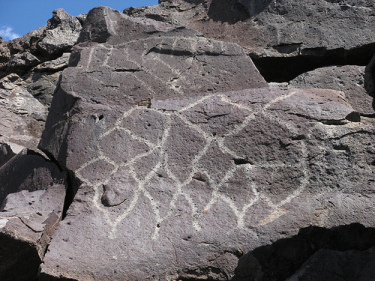
The Lagomarsino Rock Art Site, Storey County
Listed on the National Register of Historic Places in 1978, the Lagomarsino Rock Art Site is among the most impressive collection of petroglyphs in the western Great Basin. Located roughly 12 miles north of Virginia City, the site consists of more than 2,000 panels of rock art. Relative inaccessibility and watchful ownership by Storey County have protected this site from overuse and vandalism in the past. Recently proposed suburban development, however, could encroach on site and expose fragile resources to increased vandalism and abuse. While the developer of the proposed housing complex has worked with the Nevada Rock Art Foundation to lessen the potential impact, many parties are concerned about how a large new community can not adversely effect such a fragile and important resource.
Commercial Row, Wells
Founded in 1869 by Central Pacific Railroad, Wells retains an enthusiastic grassroots preservation community that preserves the towns numerous historic structures. However, following a magnitude 6.0 earthquake in the Northeast corner of Nevada on February 21, 2008, the Commercial Row is in need of significant help. Even though the earthquake damage remains widespread, there is a lack of economic support for repair and rehabilitation.
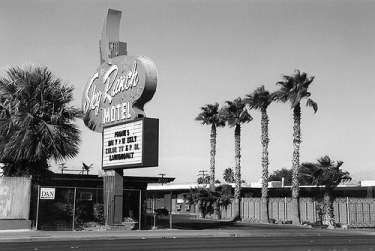
Mid-Century Roadside Motor Courts, Southern Nevada
Following the Federal-Aid Road Acts of 1916 and 1921, which created a national network of two-lane highways, automobile driving as well as the motor courts became popularized among American tourists. Built from the 1920s and 1960s, these buildings often exhibit the Wild West and western lore, with weeping mortar, faux adobe, Spanish tile roofs, and covered arcades with heavy post and beam construction. The now-aging motor courts are often located in areas of town not frequented by tourists, and relegated to long-term residential use or even abandoned altogether. They are threatened by rising land values which encouraged new development rather than adaptive reuse.
Updates on past Eleven Most Endangered Historic Places Sites
Virginia Street Bridge , Eleven Most Endangered List 2003, 2006-2007
The Virginia Street Bridge, opened to traffic in 1905, spans the Truckee River in downtown Reno. The bridge combines traditional decorative design and modern electric light fixtures. In March 2007, the Reno City Council voted to demolish and replace the Virginia Street Bridge. However, the city is still awaiting a decision on which flood project alternative the U.S. Congress will fund before the Section 106 process can begin.
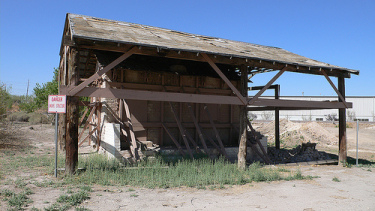
Kiel Ranch, North Las Vegas, Eleven Most Endangered List 2006-2007
The Kiel Ranch, located in North Las Vegas, contains one of the oldest historic adobe buildings remaining in Nevada. While the city of North Las Vegas has publicly stated that it will preserve and open Kiel Ranch to the public, little has been done at the site since the city made the commitment in 2005.

Huntridge Theatre, Eleven Most Endangered List 2006-2007
Listed on the National Register of Historic Places in 1993, the Huntridge Theatre provided the Las Vegas community with entertainment both live and on the silver screen for almost five decades. As one of the few surviving examples of Art Moderne theater architecture in Nevada, t he future of the Huntridge Theatre will be decided this year. The current owner is seeking to buy his way out of covenants on the deed that prevent him from demolishing the building.
Nevada Ranches, Eleven Most Endangered List 2004-2005
Nevada s ranches are quickly becoming compromised by the nations infrastructure projects. Long seen as a backwater, rural Nevada contains long valleys, bordered by magnificent mountain ranges. Recent world events are causing federal agencies to be inundated by proposed power and other infrastructure projects likely to impact hundreds of thousands of acres. Many of these projects, which are dubbed green, will forever remove the ruralness that makes these open landscapes unique in character, which contain significant ranches and other historic resources. Preserve Nevada is supportive of green energy projects and energy diversification but advocates for projects that are sensitive to preservation of the rural Nevada landscape and its ranches.
Successes Stories
Bethel AME Church, Reno
Historic Bethel AME Church in Reno barely survived a devastating fire in 2004. Through the efforts of the church and the Bethel Housing Development Corporation, and with funding from the Nevada Commission for Cultural Affairs, the building's rehabilitation has just been completed. The building will open to the public on June 8, 2008 as the Reno African-American Cultural Center. The first exhibit, sponsored by the Nevada Humanities Committee, will be on Frederick Douglass.
Nevada Northern Railway National Historic Landmark Building
The Nevada Northern Railway Engine house has now been stabilized in the words of the structural engineer, the structure should provide another 100 years of service. Additionally, the McGill Depots walls have been repaired, has a new roof, and the building envelope is sealed. There continues to be plenty of work to be done on both structures, and now they will be around for the work to be done.
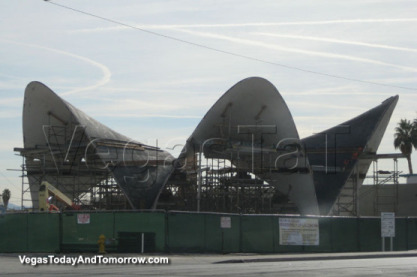
La Concha Motel Lobby, Las Vegas
After several years of hard work, and against long odds, Paul Williams La Concha has risen again at the Neon Bone Yard. The preservation of La Concha ranks as one of the most interesting moved building stories in the annals of American preservation. The reconstructed building is an excellent example of appropriate relocation.
Preserve Nevadas board members include former U.S. Sen. Richard H. Bryan; Andrew Kirk, Director of UNLVs Public History program; Sue Fawn Chung, Professor of History at UNLV and Southern Nevada advisor to the National Trust for Historic Preservation; Robert A. Stoldal, Vice President of KLAS TV-8;
UNLV, Nevada Department of Cultural Affairs, and private donations provide financial support for Preserve Nevada. For more information about Preserve Nevada send emails to PreserveNevada@gmail.com.
Special thanks to UNLV Special Collections and RoadsidePictures for letting us use these images!



Reader Comments (1)